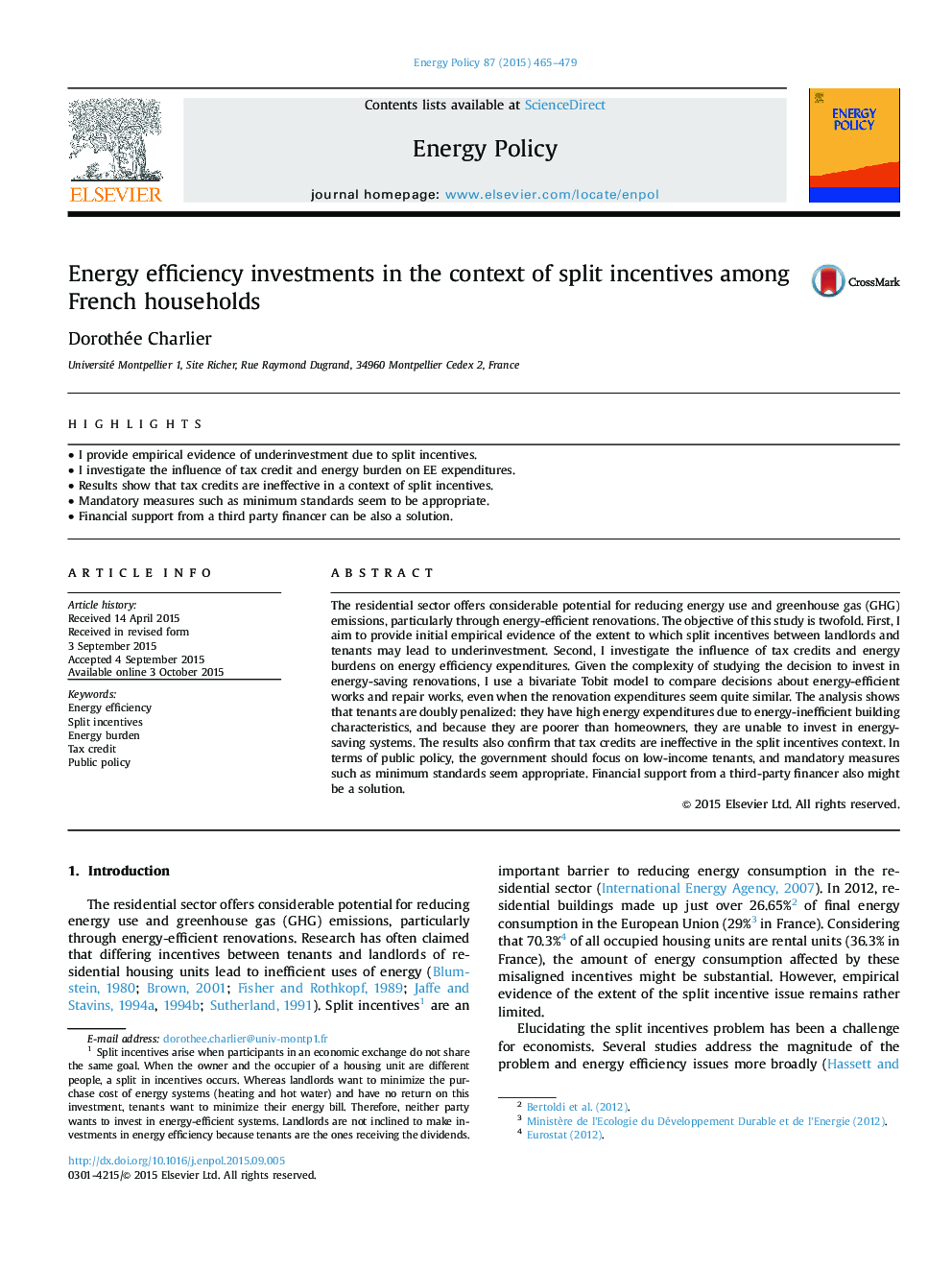| Article ID | Journal | Published Year | Pages | File Type |
|---|---|---|---|---|
| 7400168 | Energy Policy | 2015 | 15 Pages |
Abstract
The residential sector offers considerable potential for reducing energy use and greenhouse gas (GHG) emissions, particularly through energy-efficient renovations. The objective of this study is twofold. First, I aim to provide initial empirical evidence of the extent to which split incentives between landlords and tenants may lead to underinvestment. Second, I investigate the influence of tax credits and energy burdens on energy efficiency expenditures. Given the complexity of studying the decision to invest in energy-saving renovations, I use a bivariate Tobit model to compare decisions about energy-efficient works and repair works, even when the renovation expenditures seem quite similar. The analysis shows that tenants are doubly penalized: they have high energy expenditures due to energy-inefficient building characteristics, and because they are poorer than homeowners, they are unable to invest in energy-saving systems. The results also confirm that tax credits are ineffective in the split incentives context. In terms of public policy, the government should focus on low-income tenants, and mandatory measures such as minimum standards seem appropriate. Financial support from a third-party financer also might be a solution.
Related Topics
Physical Sciences and Engineering
Energy
Energy Engineering and Power Technology
Authors
Dorothée Charlier,
